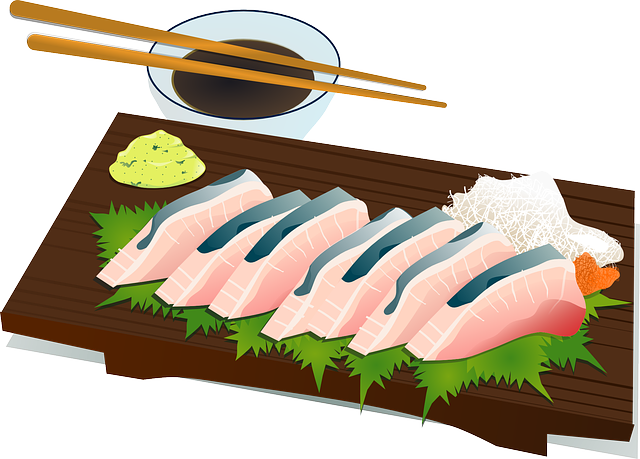
One of the most popular types of fish in many seafood restaurants and households is salmon – a reddish, firm fish that has very tender meat. Most seafood lovers enjoy eating salmon because it has a rich buttery flavour but there is one crucial detail that most forget – salmon meat has numerous health benefits.
The salmon that you will find being sold in fresh seafood stores and eateries across the U.S. can either be Pacific salmon or Atlantic salmon. However, since the U.S. has an existing ban on the fishing of Atlantic salmon, if you find this type of salmon being sold in your local supermarket, it was most probably farm-raised.
That said, most stores and eateries usually stock Pacific salmon. Some of the different pacific salmon species that you can choose from include:
• King (Chinook)
• Sockeye
• Pink
• Coho
Many of the pacific salmon species listed above usually come from the wild as opposed to being farm-raised. If you enjoy sashimi deluxe then see here.
What Are Some of the Benefits of Eating Salmon?
Experts recommend that adults consume at least two portions (8 ounces) of seafood on a weekly basis. The FDA and EPA further suggest that young children who are at least 2 years old consume 1 -2 servings of seafood (about 2-4 ounces). They further recommend that the seafood consumed should include fish that has high levels of Omega-3 fatty acids like salmon. Young children and pregnant women are also advised to avoid fish that may contain high levels of mercury. Luckily, this group can also consume salmon since research shows it does not mercury levels that can be detrimental to the health of an individual. See here for
Nutritional Benefits of Consuming Salmon
One serving of salmon (about 2 – 4 ounces) usually contains around 200 calories. Salmon meat also has very low levels of saturated fat, not to mention that it is a very good source of protein. Among all fish species, salmon is one of the best sources of Vitamin B12. It also contains high levels of potassium and other important nutrients like Vitamin D and Iron.
Health Benefits of Consuming Salmon
One of the main health benefits of salmon can be traced back to the high levels of Vitamin B12 found in the fish. Vitamin B12 in salmon usually fosters the better working of the blood and nerve cells, and, it is critical in the making of DNA.
Salmon meat also contains high levels of Omega-3 fatty acids. Most Omega-3 fatty acids play crucial roles within the human body but they cannot be produced naturally by the body. The Omega-3 fatty acids found in salmon can lower your risk of contracting the following ailments …
• Some types of cancer
• Cardiovascular diseases (including heart attacks and stroke)
• Dementia
• Alzheimer’s
• Some diseases that affect the cognitive part of the brain
Additionally, the Omega-3 fatty acids found in salmon can also ease the negative health effects brought about by rheumatoid arthritis.
Are There Any Risks Associated with Consuming Salmon?
Though the Omega-3 fatty –acids found in salmon can be very beneficial to your body, they should not be taken in high amounts especially by people who take anti-coagulants as they can cause excessive bleeding. To get the benefits associated with these fatty acids, you should stick to consuming salmon as per the serving guidelines we discussed earlier in this article.
There is also a raging debate among seafood lovers on the benefits of consuming wild salmon vs. farmed salmon. Some opine that wild salmon species are better because they have low levels of antibiotics and harmful chemicals. Others opine that that farmed salmon species like Atlantic salmon are better since the growth and harvesting of these fish are highly regulated by both State and Federal laws.
A Simplified Guide on How to Prepare Salmon
Before we delve into the salmon preparation process, there are two important things you should keep in mind …
- When buying fish, note that it should naturally smell fresh and mild and not excessively “fishy.” When buying salmon, ensure that you either purchase refrigerated fish or fish that is displayed on top of an ice bed. Further, note that frozen seafood should not be squishy or leaking rather it should be frozen solid.
- You should never leave any type of seafood (or any perishable foods for that matter) at room temperature for more than 2 hours.
That said, here is how you should prepare your salmon …
First ensure that your hands, cutting boards and all your cooking utensils are clean – before and after the cooking process. This is to prevent any bacteria from getting to your fish from your utensils and vice-versa.
Next, cut your salmon into your preferred sizes, and proceed to cook it at an internal temperature of 145 degrees Fahrenheit. Wait until the flesh becomes opaque and easily separable using a fork.
Note that you can eat salmon raw. However, if you are going to eat it raw, ensure that you first freeze the meat to kill germs. Germs tend to thrive in raw fish which is the main reason that experts advise that you either grill, bake, poach or boil it before consumption.
